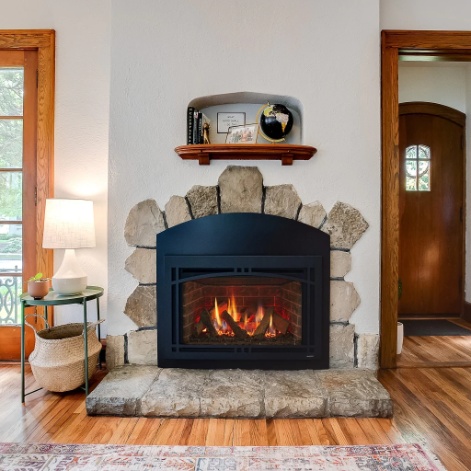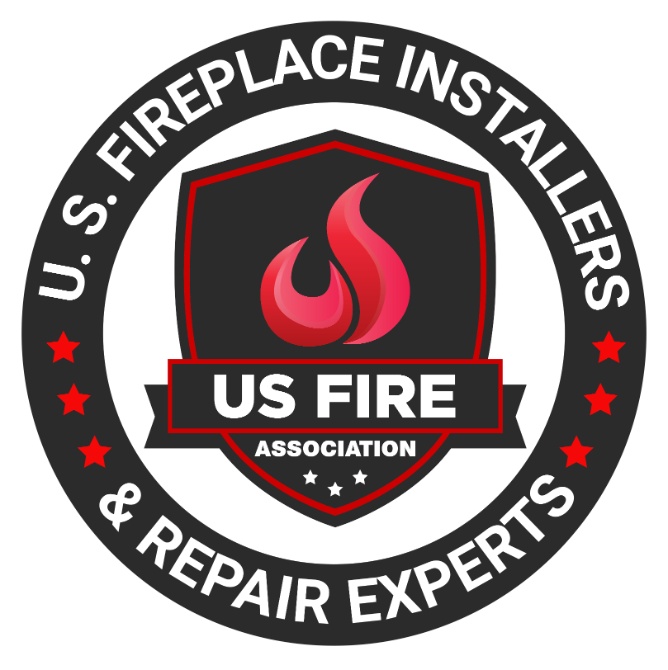Table of Contents
Considering burning cardboard in your fireplace but unsure if it’s safe?
In this article, we will explore the risks associated with burning cardboard, including the release of toxic chemicals, increased risk of chimney fires, and potential damage to your fireplace.
We will also discuss alternative options for safely disposing of cardboard, such as recycling, composting, and reusing for crafts.
Discover creative ideas for repurposing cardboard, from making furniture to using it as mulch in the garden.
Let’s dive in!
Is Burning Cardboard Safe?
Burning cardboard raises concerns about safety due to potential risks associated with the process. It is essential to evaluate the safety implications of burning cardboard, especially in indoor environments where fire hazards and air quality can be compromised.
Given that cardboard is often treated with various chemicals during its production process, burning it can release harmful toxins into the air. These toxins can not only pose health risks to individuals nearby but also contribute to indoor air pollution.
Improper disposal of burnt cardboard can harm the environment. Therefore, it is crucial to adopt eco-friendly practices such as recycling or composting cardboard instead of burning it, ensuring both personal and environmental safety.
What Are the Risks of Burning Cardboard in a Fireplace?
Burning cardboard in a fireplace poses several risks that can compromise safety and the integrity of the fireplace itself. Understanding these risks is crucial for maintaining a secure and sustainable burning environment.
- One of the primary risks associated with burning cardboard is the potential for rapid and uncontrollable flames, leading to a heightened risk of a chimney fire. Cardboard can burn quickly, creating intense heat that may exceed what the fireplace can safely handle.
- Burning cardboard releases harmful chemicals and toxins into the air, posing health risks for those in the vicinity. Proper ash disposal is essential to prevent any remaining embers from reigniting outside the fireplace. Regular chimney maintenance is also key to avoid blockages that can increase the chances of a fire hazard.
- Taking preventive measures like using seasoned wood, installing a spark guard, and ensuring proper ventilation are essential steps to mitigate the risks of burning cardboard in a fireplace.
Release of Toxic Chemicals
Burning cardboard can lead to the release of toxic chemicals into the air, posing risks to indoor air quality and contributing to the environmental impact of combustion processes.
When cardboard is burned in a fireplace, the combustion process releases harmful substances such as dioxins, furans, and particulate matter into the surrounding air. These pollutants can not only affect the immediate indoor air quality but can also have broader environmental implications. Dioxins and furans, for example, are persistent organic pollutants that can bioaccumulate in the food chain and pose health risks to humans and wildlife. The emission of these toxic chemicals contributes to air pollution, exacerbating issues such as smog and respiratory problems in the community.
Therefore, it is crucial to avoid burning cardboard and opt for proper recycling methods to protect both indoor and outdoor air quality.
Increased Risk of Chimney Fire
The act of burning cardboard in a fireplace increases the risk of chimney fires due to the combustible nature of cardboard materials and the potential buildup of flammable residues.
Cardboard, when burned, can release sparks and embers that may escape through the chimney, igniting any creosote deposits present within. These creosote deposits, which are highly flammable, can lead to a dangerous chimney fire if not regularly cleaned. It is imperative to schedule routine chimney inspections and cleanings to ensure that any creosote accumulation is removed promptly. Proper disposal of cardboard waste through recycling or composting can significantly reduce the likelihood of accidental fires and help maintain a safe and functional fireplace.
Damage to the Fireplace
Burning cardboard in a fireplace can lead to damage to the fireplace itself, posing risks to its structural integrity and overall safety. Proper maintenance is essential to prevent such issues.
Cardboard, when burned, releases harmful chemicals into the air, potentially affecting indoor air quality and the health of those nearby. The ashes left behind can quickly accumulate and block proper airflow, increasing the risk of chimney fires. Regular inspection and cleaning of the fireplace and chimney are crucial in maintaining a safe and efficient heating system.
Utilizing a fireplace screen can also help prevent sparks from escaping and causing unintended fires in the home.
What Are the Alternatives to Burning Cardboard in a Fireplace?
Opting for alternatives to burning cardboard in a fireplace can promote sustainability and reduce the carbon footprint associated with traditional combustion practices. Exploring eco-friendly alternatives is key to responsible fireplace usage.
- Instead of burning cardboard in a fireplace, consider using it for creative recycling projects or composting. Cardboard can be shredded and used as mulch in gardens, reducing waste while enriching the soil.
- Another option is to repurpose cardboard into DIY crafts or storage solutions.
- Investing in fire logs made from recycled materials or sustainably sourced wood can provide a cleaner and more efficient alternative for fireplace usage.
By making conscious choices in how we handle cardboard waste, we can contribute to a greener environment and lessen our impact on the planet.
Use Seasoned Firewood
Using seasoned firewood as an alternative to burning cardboard in a fireplace is a responsible choice that adheres to indoor burning regulations and promotes sustainable waste disposal practices.
By opting for seasoned firewood, individuals ensure that the air quality inside their homes remains healthy and free from harmful emissions that burning inappropriate materials can release. Following guidelines for safe and sustainable indoor burning practices not only prevents the risk of chimney fires but also contributes to overall environmental sustainability. Using seasoned firewood helps maintain the efficiency of the fireplace, providing consistent warmth and a cozy ambiance during colder months.
Use Newspaper or Kindling
Utilizing newspaper or kindling as alternatives to burning cardboard in a fireplace can mitigate fire hazards and promote recycling practices while adhering to recommended precautions for open fires.
Newspaper and kindling offer a safer option for burning in a fireplace as they tend to burn more evenly and with less risk of sparking or emitting harmful fumes compared to cardboard. Using newspaper or kindling is an eco-friendly choice, as it encourages the repurposing of paper materials that might otherwise end up in landfills.
When using open fires for heating or ambiance, it is important to ensure proper ventilation and keep flammable objects at a safe distance to prevent accidents or fire outbreaks.
Consider an Electric Fireplace
Opting for an electric fireplace provides a sustainable solution that eliminates the need for burning materials like cardboard, ensuring compliance with indoor burning regulations and reducing environmental impact.
Electric fireplaces are highly energy-efficient, consuming less electricity than traditional wood-burning fireplaces. This not only helps in lowering energy costs but also decreases carbon emissions, contributing to a healthier environment. Electric fireplaces do not emit harmful pollutants like carbon monoxide or particulate matter, making them a safer option for indoor use. By opting for an electric fireplace, individuals can enjoy the warmth and ambiance of a fire without compromising on environmental responsibility.
How Can I Safely Dispose of Cardboard?
Safely disposing of cardboard involves various methods such as recycling, composting, and ensuring proper ash disposal to maintain indoor air quality and promote effective waste management.
- Recycling cardboard is an eco-friendly option that involves breaking down the material into pulp and reforming it into new products.
- Composting cardboard can be done by shredding it into small pieces and mixing it with other organic matter, allowing it to decompose naturally and enrich the soil.
- Proper ash disposal is crucial as ash from burnt cardboard can contain harmful chemicals; it should be cooled, sealed in a metal container, and disposed of in accordance with local regulations.
When burning cardboard, ensure proper smoke ventilation to prevent indoor air pollution, and use natural ventilation methods to maintain clean indoor air during disposal processes.
Recycling
Recycling cardboard is a fundamental practice in waste management that aligns with green living principles, promoting eco-friendly solutions and reducing the environmental impact of improper disposal.
When cardboard is recycled instead of ending up in landfills, it not only conserves valuable landfill space but also helps in the conservation of natural resources. By processing used cardboard into new products, less energy is required compared to creating products from raw materials, resulting in lower greenhouse gas emissions. Recycling cardboard reduces the need to cut down trees, which are vital for absorbing carbon dioxide from the atmosphere and maintaining ecological balance. Thus, cardboard recycling plays a crucial role in sustainable waste management and contributes significantly to environmental preservation.
Composting
Composting cardboard offers an eco-friendly disposal method that supports responsible waste management practices, contributing to reducing the overall environmental impact of discarded materials.
By diverting cardboard from landfills and instead turning it into nutrient-rich compost, individuals can actively reduce their carbon footprint while also enriching the soil with valuable organic matter. This sustainable practice not only helps in minimizing greenhouse gas emissions but also promotes a greener lifestyle by fostering a deeper connection to nature and a more mindful approach towards consumption and waste disposal. Composting cardboard is a simple yet impactful way to participate in the global movement towards environmental sustainability and conservation.
Reusing for Crafts or Packaging
Reusing cardboard for crafts or packaging purposes presents creative ways to extend the lifespan of materials, contributing to efficient recycling practices and effective waste management.
Crafting with cardboard not only provides a sustainable alternative to traditional materials but also encourages innovation and resourcefulness. By repurposing cardboard, individuals can create unique art pieces, practical storage solutions, or even eco-friendly gift packaging. This eco-conscious approach helps in reducing the demand for new raw materials and minimizes the environmental impact associated with excessive waste generation. Embracing the versatility of cardboard in various DIY projects promotes a sense of responsibility towards adopting greener practices for a cleaner and healthier planet.
What Are Some Creative Ways to Reuse Cardboard?
Repurposing cardboard in creative ways offers opportunities to transform the material into furniture, art pieces, or garden mulch, contributing to reducing carbon footprint and promoting sustainability.
Whether you’re looking to add a unique touch to your home decor or seeking environmentally-friendly gardening solutions, cardboard can be a versatile and eco-conscious resource. By upcycling cardboard boxes into stylish tables, chairs, or room dividers, you not only save money but also reduce waste that would otherwise end up in landfills.
Crafting cardboard into intricate sculptures or wall art pieces adds a personal touch to your living space while minimizing your impact on the environment. Embracing cardboard as garden mulch provides nutrient-rich soil amendments, fostering healthy plant growth and preventing weed growth naturally.
Make Furniture or Storage Solutions
Transforming cardboard into furniture pieces or storage solutions presents an eco-friendly approach to reducing carbon footprint. This is accomplished while exploring creative ways to repurpose materials effectively.
These innovative solutions involve taking seemingly ordinary cardboard and transforming it. Cardboard will be turned into functional and stylish pieces for the home or office. Utilizing eco-friendly disposal practices, such as recycling or composting, significantly reduces the environmental impact. The process of making furniture from cardboard requires out-of-the-box thinking and a keen eye for design. This ensures the final products are not only sustainable but also aesthetically pleasing. Repurposing materials in this way not only benefits the environment. It also contributes to a more sustainable future for generations to come.
Create Art or Decorations
Using cardboard to create art pieces or decorative items fosters sustainable practices and encourages recycling efforts. This showcases the versatility of the material in artistic endeavors.
The beauty of using cardboard lies in its ability to transform into something entirely new and unexpected. From intricate sculptures to functional furniture, the possibilities are endless.
By repurposing this humble material, artists can infuse their creations with a sense of eco-consciousness. Consequently, this draws attention to the importance of sustainable living. The tactile nature of cardboard adds depth and texture to artworks. A visually captivating piece that challenge traditional notions of beauty is created.
Embracing cardboard in art not only reduces waste but also sparks creativity and innovation in the realm of design.
Use as Mulch in the Garden
Employing cardboard as mulch in the garden serves as a sustainable way to recycle materials. It also supports composting initiatives, and enhances soil health through eco-friendly gardening practices.
Using cardboard as mulch in garden beds can significantly reduce landfill waste. They accomplish this by repurposing boxes and packaging materials into a beneficial resource for plants. As the cardboard breaks down, it adds organic matter to the soil, improving its structure and water retention capabilities. This, in turn, creates a healthier environment for plant roots to thrive and absorb essential nutrients. The decomposition process of cardboard mulch encourages beneficial soil microorganisms to flourish. This promotes a fertile and balanced ecosystem for optimum plant growth.
Need More?
Dreifuss Fireplaces is your local expert on all thing fireplace-related. They can answer your fireplace questions, including concerns about burning cardboard. Contact Dreifuss if you have more questions, or need help.
Frequently Asked Questions
1. Can I burn cardboard in my fireplace?
Burning cardboard in your fireplace is not safe. It poses health risks from toxic chemical release, increases the chance of chimney fires, and can damage your fireplace.
2. What are the risks of burning cardboard in my fireplace?
Risks include rapid and uncontrollable flames. This can lead to chimney fires and release of harmful chemicals affecting health. It also has the potential damage to the fireplace’s structural integrity.
3. What are the alternatives to burning cardboard in a fireplace?
Alternatives include recycling, composting, and repurposing for crafts. You can also use seasoned firewood, or switch to an electric fireplace for a safer and more eco-friendly option.
4. How can I safely dispose of cardboard?
You can safely dispose of cardboard by recycling, composting, or reusing it for crafts and packaging. Avoid burning and ensure it does not harm the environment or indoor air quality.
5. What are some creative ways to reuse cardboard?
Creative reuse options include making furniture or storage solutions. In addition, crafting art or decorations can be made. Cardboard can also be used as mulch in the garden. These ideas highlight cardboard’s versatility and sustainability.
6. Why should I avoid burning cardboard in my fireplace?
Avoid burning cardboard to prevent releasing toxic chemicals, risking chimney fires, and damaging your fireplace. Explore safer disposal methods like recycling or composting instead.
Latest Articles

What Is An NG (Natural Gas) Indicator And Why You Need It For Your Fireplace
Table of Contents1 Understanding Natural Gas Fireplaces2 What is an NG Indicator?3 Importance of NG Indicators for Safety4 Types of NG Indicators5 Installation and Maintenance of NG Indicators6 Signs of a Faulty NG Indicator7 Frequently Asked Questions Natural gas fireplaces are a favored option among numerous homeowners due to their convenience and effectiveness. But, what is an NG (Natural Gas) indicator and why you need it for your fireplace? It is imperative to comprehend how they function and the significance of having an NG (Natural Gas) indicator for safety purposes. This article delves into the definition and significance of NG indicators. We will discuss the potential hazards associated with the absence of one and the various types of indicators accessible. Also, we will discuss installation and maintenance recommendations, and methods to recognize and rectify issues with malfunctioning indicators. Stay well-informed and ensure the safety of your home by referring to this exhaustive guide. Understanding Natural Gas Fireplaces Natural gas fireplaces serve as an efficient and convenient heating option for numerous households. They utilize natural gas as a fuel source to deliver consistent warmth and ambiance. How They Work and Why They Need NG Indicators The operation of natural gas fireplaces involves igniting natural gas to generate heat. This process requires diligent monitoring to ensure both safety and efficiency, a task facilitated by the use of NG indicators. NG indicators play a critical role in detecting potential gas leaks. They enable residents to promptly address and mitigate any associated hazards. Through continuous monitoring of gas levels and providing timely warnings and alerts, NG indicators uphold a secure indoor environment. It is imperative to ensure that these indicators function properly to facilitate the effective operation of natural gas fireplaces. This helps mitigate the inherent risks linked to gas leaks. What is an NG Indicator? An NG indicator is a specialized device equipped with advanced sensors and technology. It is specifically designed to detect natural gas leaks and monitor gas pressure in appliances, such as fireplaces. Definition and Purpose The NG indicator functions as a detector that monitors gas appliances for potential leaks. It provides essential functionality to ensure safety in households utilizing natural gas. These detectors play a crucial role in protecting residences by notifying occupants of dangerous gas leaks long before they escalate into perilous situations. Through continuous monitoring of gas levels in the vicinity, NG indicators offer an additional layer of protection. This is particularly important in properties that rely on gas-operated fireplaces or stoves. These devices not only help avert potential disasters but also enhance the overall peace of mind of homeowners. They assure them that their living spaces are equipped with reliable safety features. Importance of NG Indicators for Safety Natural gas indicators are essential for maintaining safety in households equipped with natural gas appliances. These devices serve as a proactive measure to promptly detect gas leaks. This offers homeowners a sense of security and assurance. Potential Dangers of Not Having an NG Indicator The absence of an NG indicator in residences equipped with natural gas appliances can pose significant hazards. This includes the risk of undetected gas leaks , carbon monoxide poisoning , and pilot outages that may lead to dangerous situations. These potential risks can profoundly impact indoor air quality. They directly influence the health and safety of individuals residing in the household. Undetected gas leaks can go unnoticed, gradually permeating the air and creating a potentially explosive environment. Insufficient ventilation from undetected exposure to carbon monoxide can lead to serious health complications. These range from mild symptoms such as dizziness to fatal poisoning. Without proper monitoring from an NG indicator, families are left susceptible to these concealed threats. This underscores the critical importance of implementing proactive measures to mitigate such risks. Types of NG Indicators Indicators for Natural Gas (NG) are available in diverse types. Each presents distinct detection capabilities tailored to specific requirements, encompassing both manual and automated alternatives. Manual vs. Automatic Indicators Manual NG indicators require user intervention for monitoring gas levels and identifying leaks. On the other hand, automatic indicators employ sophisticated technology to deliver continuous, real-time monitoring. This heightened efficiency and oversight enhance safety protocols. Conventional manual indicators rely on individuals to physically inspect and evaluate gas levels periodically. This renders them more susceptible to human errors. Conversely, automatic indicators feature sensors capable of promptly detecting even the most minute fluctuations in gas levels. This establishes a more dependable and precise monitoring mechanism. Automatic indicators can activate alerts and shut-off systems upon detecting a leak. This ensures immediate action to avert potential hazards. This advanced technology enhances safety protocols and instills a sense of command and assurance among users. Installation and Maintenance of NG Indicators The reliable and accurate performance of NG indicators necessitates proper installation and consistent maintenance. This often entails professional installation and adherence to recommended service guidelines. Proper Installation and Regular Maintenance Tips The proper installation of NG indicators involves adhering to the specifications in the user manual. Maintenance protocols entail strict adherence to a predetermined maintenance schedule to ensure sustained operational efficiency. During the installation phase, it is imperative to verify that the NG indicators are securely affixed in the designated location as stipulated by the manufacturer. Crucial steps include confirming power source compatibility and ensuring proper grounding of the device to optimize performance. Calibration of the indicator must be executed meticulously to ensure precise readings. Regarding maintenance, essential practices include regular inspection for signs of wear, thorough cleaning of the indicator components, and routine functionality tests. By allocating time to a consistent maintenance regimen, the NG indicator can operate with optimal efficiency over an extended duration. Signs of a Faulty NG Indicator Recognizing indicators of a malfunctioning NG indicator is essential for upholding safety and performance standards. Inaccuracies and detection issues can undermine the efficacy of these devices. Identifying and Addressing Issues The process of identifying and addressing issues related to NG (natural gas) indicators requires a systematic troubleshooting approach. This ensures their optimal performance

What You Need To Know About Gas Log Set Safety And Installation Considerations
Table of Contents1 Understanding Gas Log Sets2 Safety Considerations for Gas Log Sets3 Installation Guidelines for Gas Log Sets4 Maintaining and Troubleshooting Gas Log Sets5 Frequently Asked Questions Gas log sets are a favored option among homeowners seeking to enjoy the comfort and atmosphere of a conventional fireplace without the inconvenience of wood. This article tells you what you need to know about gas log set safety and installation considerations. Before incorporating one into your residence, it is imperative to understand the safety considerations associated with their use. This discussion delves into the potential hazards linked with gas log sets. It presents crucial precautions to uphold the safety of your home. Also, it outlines proper installation procedures and offers insight into common errors to avoid. Finally, it provides advice on maintenance and troubleshooting. Gain comprehensive knowledge on gas log set safety and installation considerations. Understanding Gas Log Sets Comprehending gas log sets is essential for individuals seeking to elevate their fireplace experience, and for gas lag set safety and installation. These heating appliances can operate on either natural gas or propane. In addition, they are available in a range of styles, including vented, ventless, and vent-free options. They provide an array of benefits and customization opportunities through various fireplace accessories. What are Gas Log Sets? Gas log sets are meticulously crafted artificial logs. They are designed to imitate the appearance and functionality of authentic wood logs within fireplaces. These gas log sets typically consist of ceramic or refractory concrete logs that have been skillfully molded and painted. This allows them to replicate the natural grain and texture of real wood. The logs are arranged in various configurations within the fireplace. They establish a realistic and welcoming ambiance. In addition to the logs, gas log sets often include fireplace accessories such as glowing embers. Accessories also include decorative stones, and even pine cones to enhance the overall aesthetic appeal. Homeowners can select from an array of placement options. These include traditional wood stack, cascading driftwood, or a contemporary geometric arrangement. Homeowners can align their preferred style and design preferences. Safety Considerations for Gas Log Sets Safety considerations for gas log sets are of utmost importance to guarantee a secure and pleasant fireplace experience. It is essential to address potential hazards such as carbon monoxide exposure, gas leaks, and fire safety to maintain a safe environment for homeowners. Potential Hazards and Precautions Gas log sets come with potential hazards that must be taken seriously, including the risks of gas leaks, carbon monoxide poisoning, and fire incidents. It is imperative to establish and adhere to rigorous safety measures to ensure the well-being of individuals and properties involved in the use of gas log sets. Gas leaks represent a significant hazard when utilizing gas log sets. They can result in the accumulation of combustible gas within the premises, heightening the possibility of explosions or fires. Carbon monoxide, an insidious gas generated during incomplete combustion, poses a grave threat due to its colorless and odorless nature, making it undetectable without proper monitoring. To address these risks effectively, it is vital to install carbon monoxide detectors and gas leak sensors in the vicinity of the gas logs. Routine maintenance checks on the gas log system, including cleaning and inspection procedures, are critical to ensure safe operations and the prompt identification of potential issues. In case of a gas leak or suspected presence of carbon monoxide, immediate evacuation of the affected area is paramount, followed by prompt contact with emergency services. Recognizing the distinct odor of rotten eggs associated with natural gas can serve as an early warning sign, prompting swift actions to avert any potential accidents. Installation Guidelines for Gas Log Sets The installation of a gas log set necessitates meticulous planning and strict adherence to specific guidelines. This includes verifying a secure gas connection, ensuring proper gas lines are in place, and complying with local building codes. Often, the complexity of these requirements may require the expertise of a certified technician. Proper Installation Techniques The appropriate installation procedures for gas log sets involve the secure connection of gas lines, meticulous adherence to installation manuals, and strict compliance with local building codes. It is imperative to prioritize the guarantee of secure gas connections to avert leaks and potential safety hazards. During the installation of gas log sets, utilizing suitable sealants and fittings is essential to establish a tightly sealed connection. The correct installation of gas lines is critical for both the safety and operational efficacy of the gas log set. Reference to the installation manual is highly advisable for detailed, step-by-step guidance to prevent inaccuracies and ensure the successful establishment of the gas log set. Consistently adhering to building codes and regulations upholds safety standards. Seeking guidance and confirmation from a certified technician before and after installation can offer invaluable support and assurance throughout the process. Common Installation Mistakes to Avoid It is imperative to avoid common installation errors to ensure the secure and effective operation of gas log sets. This includes verifying proper gas connections and compliance with building codes. Improper gas connections can result in leaks and potential hazards, underscoring the importance of verifying the tightness and correct alignment of all fittings. Failure to adhere to building codes can lead to structural complications, penalties for non-compliance, or even safety concerns. To prevent these oversights, it is advised to consult the manufacturer’s installation guidelines and strictly adhere to local regulations. Engaging a certified technician for the installation of gas log sets guarantees that the procedure is carried out accurately and securely. This provides assurance that the system is functioning as intended. Maintaining and Troubleshooting Gas Log Sets Regular maintenance and troubleshooting of gas log sets are imperative to uphold their optimal performance and safety. This includes thorough examination of the pilot light, pilot assembly, and other gas appliances to preserve heating efficiency and promptly resolve any arising issues. Tips for Maintenance and Repair Ensuring the proper maintenance of your gas log set necessitates conducting

Key Considerations For Using Compressed Liquid Propane In Fireplace Installation
Table of Contents1 What is Compressed Liquid Propane?2 Benefits of Using Compressed Liquid Propane in Fireplaces3 Safety Precautions for Installing Compressed Liquid Propane Fireplaces4 Installation Process for Compressed Liquid Propane Fireplaces5 Maintenance and Care for Compressed Liquid Propane Fireplaces6 Alternative Fuel Options for Fireplaces7 Frequently Asked Questions If you are contemplating the use of compressed liquid propane in your fireplace installation, this discussion will delve into the advantages of adopting this alternative fuel option. These benefits include enhanced efficiency, cost savings, and important safety precautions to consider. Furthermore, a detailed step-by-step guide on the installation process will be provided, along with recommendations for maintenance and care. A comparison of various fuel options for fireplaces will also be conducted to assist you in making an informed decision. We encourage you to stay engaged to gain insights into optimizing your fireplace’s capabilities with compressed liquid propane. What is Compressed Liquid Propane? Compressed Liquid Propane is a versatile energy source contained in a high-pressure propane tank. It finds extensive utility in both residential and commercial settings, prominently including fireplaces. Recognized for its convenience and efficiency, Compressed Liquid Propane emerges as a favored option for heating residential spaces and facilitating culinary pursuits across various environments. Additionally, it serves as a viable fuel substitute in vehicular contexts, portable cooktops, and outdoor grilling scenarios due to its propensity for clean combustion. The attribute of portability, coupled with ease of storage, positions Compressed Liquid Propane as an optimal energy source for individuals residing off the conventional grid. It is also great for engaging in outdoor activities such as camping and recreational vehicle (RV) travel. Moreover, the high energy density inherent to Compressed Liquid Propane renders it a dependable choice for sustaining generators during instances of power disruptions. Benefits of Using Compressed Liquid Propane in Fireplaces Utilizing Compressed Liquid Propane for fireplace installation presents several benefits. These include enhanced fuel efficiency, convenience, cost-effectiveness, and a favorable environmental footprint. These attributes render it a recommended option for heating solutions, applicable to both on-grid and off-grid settings. Efficiency and Cost Savings The utilization of Compressed Liquid Propane in fireplaces offers significant advantages, notably in terms of high fuel efficiency and cost-effectiveness. These attributes are underscored by the exceptional BTU rating and overall heating efficiency of Compressed Liquid Propane. The elevated fuel efficiency exhibited by Compressed Liquid Propane fireplaces necessitates less fuel to generate the same level of heat compared to traditional wood-burning fireplaces or electric heating systems. Consequently, homeowners can realize cost savings on their heating expenditures over an extended period. Moreover, the clean-burning characteristics of propane minimize maintenance costs linked to soot and ash cleanup. This further enhances the cost-effectiveness of employing propane fireplaces. Safety Precautions for Installing Compressed Liquid Propane Fireplaces Ensuring safety is of utmost importance during the installation of Compressed Liquid Propane fireplaces. This requires strict adherence to safety regulations, meticulous attention to proper ventilation requirements, careful control of ignition sources, and the incorporation of carbon monoxide and gas leak detection systems. Important Safety Measures Essential safety protocols for the installation of Compressed Liquid Propane fireplaces encompass adherence to fire safety regulations. Engaging in professional assessments and employing sophisticated gas leak and carbon monoxide detection mechanisms is crucial. Professional evaluations play a critical role in identifying any prospective hazards or irregularities within the fireplace infrastructure. These assessments are vital in ensuring the operational integrity of all components and compliance with safety protocols. Routine inspections serve to forestall potential fire incidents, gas discharges, or carbon monoxide emissions that could pose significant threats to both the property and individuals in the vicinity. The utilization of advanced gas leak and carbon monoxide detection systems serves as an additional safeguard by promptly notifying occupants of any elevated levels of these hazardous gases. Installation Process for Compressed Liquid Propane Fireplaces The installation procedure for Compressed Liquid Propane fireplaces encompasses several critical steps. These include: Adhering to installation guidelines Correctly positioning the propane tank Ensuring precise gas line installation Optimizing heat output Monitoring pressure regulation Establishing the pilot light Step-by-Step Guide The installation process of Compressed Liquid Propane fireplaces involves a systematic approach. This begins with the construction of the firebox, followed by the installation of the gas control valve, setup of the ignition system, design of the flue, and verification of a suitable combustion air supply. The construction of the firebox assumes critical importance as it serves as the foundation of the fireplace structure. It securely holds the combustible materials in place. Subsequently, the gas control valve plays a key role in managing the propane flow, guaranteeing safe and efficient operation. The installation of the ignition system facilitates convenient and reliable fire initiation. Designing the flue is a necessary step to direct exhaust gases outside, thus preventing their accumulation indoors. Moreover, ensuring a proper combustion air supply is essential to sustain optimal burning conditions and enhance fuel consumption efficiency. Each component contributes significantly to the functionality and safety of the fireplace installation process. This underscores the importance of meticulous attention to detail and adherence to established protocols. Maintenance and Care for Compressed Liquid Propane Fireplaces Consistent maintenance and attention to Compressed Liquid Propane fireplaces are imperative to guarantee their optimal functionality. This includes adherence to prescribed maintenance protocols, regular chimney upkeep, prevention of soot accumulation, and scheduling of routine propane deliveries and professional inspections. Tips for Keeping Your Fireplace in Good Condition For the maintenance of your Compressed Liquid Propane fireplace, it is essential to conduct regular checks on ignition sources. Monitor flame appearance, clean the gas burner and pilot assembly, and verify the correct operation of the safety shut-off valve. The inspection of ignition sources requires a detailed examination of the electronic igniter. This helps identify any signs of damage or corrosion and ensures proper sparking upon activation. Monitoring flame appearance involves observing a consistent blue flame with minimal flickering, which signifies efficient combustion. Cleaning the gas burner and pilot assembly can be performed using a soft brush or compressed air to eliminate any dirt or debris that may
